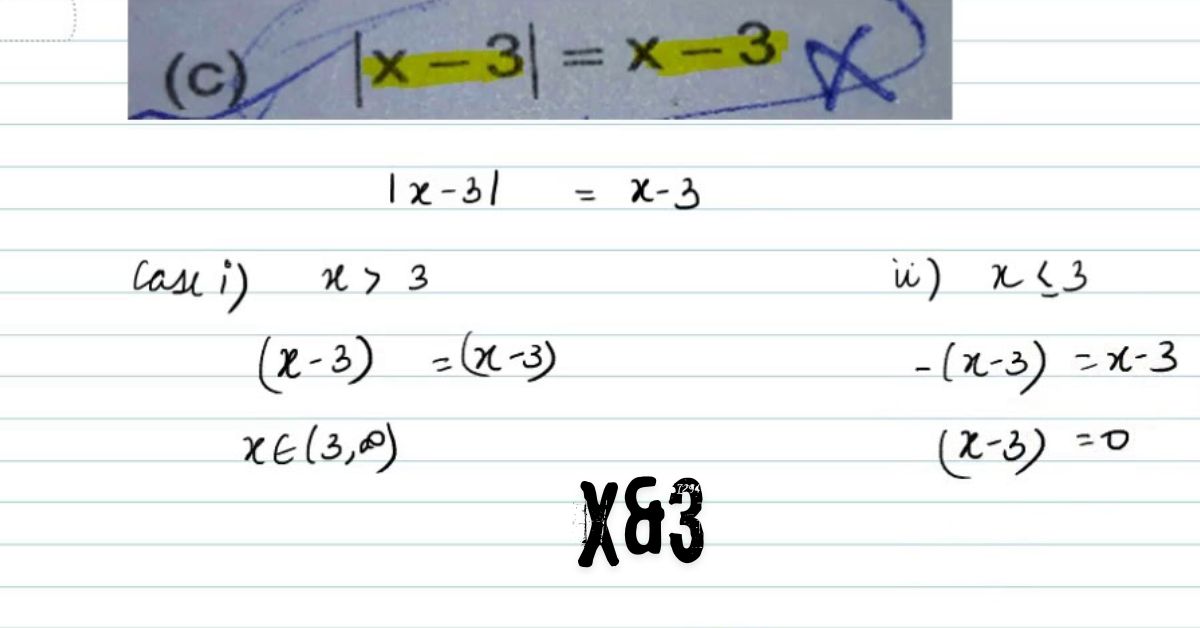The relationship between the bitwise AND operation x&3 and the modulo operation (x mod 4) is an interesting and often overlooked concept in computer science and programming. In this article, we’ll explore the reasons why these two expressions are identical and the practical implications of this equivalence.
TRENDING
Error: src refspec master does not match any
Understanding Bitwise AND and Modulo Operations
To understand the connection between (x & 3) and (x mod 4), we need to first understand the underlying operations.Bitwise AND (&):
The bitwise AND operation compares the corresponding bits of two binary numbers and returns a new binary number where the bits are set to 1 only if the corresponding bits of both operands are 1. In other words, it performs a logical AND operation on each pair of corresponding bits.Modulo (mod):
The modulo operation, also known as the remainder operation, returns the remainder of dividing one number by another. In the expression (x mod 4), the result is the remainder of dividing x by 4.
The Equivalence of (x & 3) and (x mod 4)
Now, let’s explore why (x&3) and (x mod 4) are identical.The key to understanding this relationship lies in the binary representation of the numbers involved. The binary representation of the number 3 is 0011 (in 4 bits), and the binary representation of the number 4 is 0100 (also in 4 bits).When we perform the bitwise AND operation (x & 3), we are effectively masking the rightmost 2 bits of the binary representation of x. This means that the result will only depend on the values of the rightmost 2 bits of x, and all the other bits will be discarded.On the other hand, when we perform the modulo operation (x mod 4), we are also only considering the rightmost 2 bits of x. This is because the modulo operation with 4 (or any power of 2) is equivalent to considering only the rightmost 2 bits of the binary representation of the number.Here’s a more detailed explanation:
- Bitwise AND (
x & 3):- The binary representation of 3 is
0011, which means that the bitwise AND operation will only keep the rightmost 2 bits ofxand set all the other bits to 0. - For example, if
xis10101010, the result of(x & 3)will be00000010, which is the same as the rightmost 2 bits ofx.
- The binary representation of 3 is
- Modulo (
x mod 4):- The modulo operation with 4 (or any power of 2) is equivalent to considering only the rightmost 2 bits of the binary representation of the number.
- This is because the binary representation of 4 is
0100, which means that the rightmost 2 bits of the number determine the remainder when divided by 4. - For example, if
xis10101010, the result of(x mod 4)will be10, which is the same as the rightmost 2 bits ofx.
Therefore, the expressions (x&3) and (x mod 4) are identical because they both effectively consider only the rightmost 2 bits of the binary representation of x.
Practical Applications
The equivalence of (x & 3) and (x mod 4) has several practical applications in computer science and programming:
- Bit Manipulation:
- The bitwise AND operation
(x&3)is often used as a faster alternative to the modulo operation(x mod 4)when working with binary data or when performance is critical. - This is because the bitwise AND operation is generally faster than the modulo operation, as it can be implemented more efficiently in hardware and software.
- The bitwise AND operation
- Masking and Extracting Bits:
- The bitwise AND operation
(x & 3)can be used to mask or extract the rightmost 2 bits of a number, which can be useful in various programming tasks, such as bit manipulation, data packing, and error checking.
- The bitwise AND operation
- Modular Arithmetic:
- The modulo operation
(x mod 4)is commonly used in modular arithmetic, which is the study of the properties of numbers under the modulo operation. - Modular arithmetic has applications in cryptography, error-correcting codes, and various other areas of computer science and mathematics.
- The modulo operation
- Optimization and Performance:
- Knowing the equivalence of
(x & 3)and(x mod 4)can help programmers optimize their code by choosing the more efficient operation based on the specific requirements of the problem. - In some cases, using the bitwise AND operation
(x & 3)instead of the modulo operation(x mod 4)can lead to significant performance improvements, especially in time-critical applications.
- Knowing the equivalence of
Conclusion
The equivalence of the bitwise AND operation (x & 3) and the modulo operation (x mod 4) is a fascinating and useful concept in computer science and programming. By understanding the underlying binary representations and the properties of these operations, developers can leverage this knowledge to write more efficient and optimized code, particularly in areas involving bit manipulation, modular arithmetic, and performance-critical applications.
ALSO READ: Keeper Standard Test











